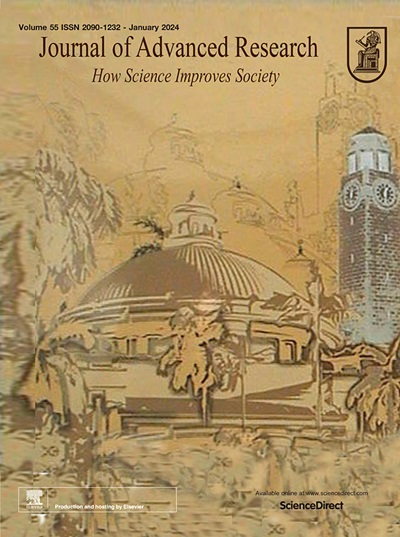Chromosome-level genome provides novel insights into the starch metabolism regulation and evolutionary history of Tetraselmis helgolandica
IF 11.4
1区 综合性期刊
Q1 MULTIDISCIPLINARY SCIENCES
引用次数: 0
Abstract
Introduction
Tetraselmis helgolandica is a marine microalga belonging to the Chlorophyta phylum. It is widely distributed in the coastal waters of Asia and is commonly used as aquatic feed. T. helgolandica is characterized by its large size, preference for starch accumulation, low temperature tolerance, presence of flagella, and strong motility. However, research on T. helgolandica is limited, and its genome data remains unavailable.Objective
We generated a high-quality, chromosome-scale genome of T. helgolandica. Through comparative genomics, we uncovered the genome characteristics and evolutionary history of T. helgolandica. Additionally, by integrating transcriptome data, we elucidated how the light–dark rhythm enhances the high starch production.Methods
We utilized long-read sequencing data and high-throughput chromosome conformation capture data from the Oxford Nanopore platform to construct a high-quality genome of T. helgolandica. Genome annotation was performed using multiple databases, and comparative genomic analysis was conducted with nine species, including Arabidopsis thaliana, to reveal the evolutionary history. Finally, we combined transcriptome data to elucidate the molecular mechanisms underlying the high starch yield.Results
Circadian rhythm significantly promote starch accumulation and increase amylose content. The chromosome-scale genome revealed it shares a common ancestor with other green algae approximately 1,017 million years ago. This relatively ancient divergence underscores its evolutionary distinction within the green lineage. It may possess a more complex protein modification mechanism and a more fully developed Golgi apparatus. Circadian rhythm broadly up-regulates key enzymes involved in starch synthesis, including GBSS and Starch Synthase, while down-regulating SS Ⅲa. This regulation enhances starch accumulation and increases the amylose content.Conclusion
This study provided a high-quality genome of T. helgolandica and revealed the potential mechanism by which the circadian rhythm promotes starch accumulation and increases the amylose ratio. The genome of T. helgolandica will serve as an important resource for evolutionary research and transgenic platform development.

求助全文
约1分钟内获得全文
求助全文
来源期刊

Journal of Advanced Research
Multidisciplinary-Multidisciplinary
CiteScore
21.60
自引率
0.90%
发文量
280
审稿时长
12 weeks
期刊介绍:
Journal of Advanced Research (J. Adv. Res.) is an applied/natural sciences, peer-reviewed journal that focuses on interdisciplinary research. The journal aims to contribute to applied research and knowledge worldwide through the publication of original and high-quality research articles in the fields of Medicine, Pharmaceutical Sciences, Dentistry, Physical Therapy, Veterinary Medicine, and Basic and Biological Sciences.
The following abstracting and indexing services cover the Journal of Advanced Research: PubMed/Medline, Essential Science Indicators, Web of Science, Scopus, PubMed Central, PubMed, Science Citation Index Expanded, Directory of Open Access Journals (DOAJ), and INSPEC.
 求助内容:
求助内容: 应助结果提醒方式:
应助结果提醒方式:


